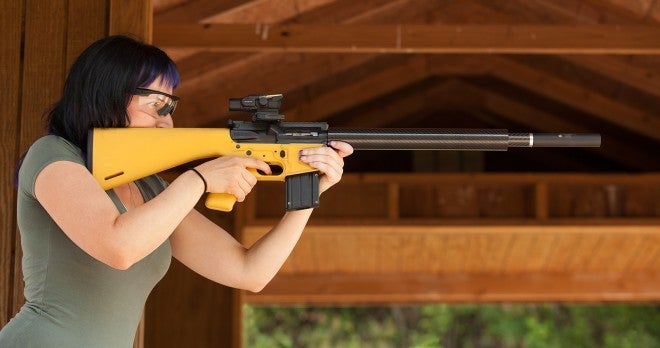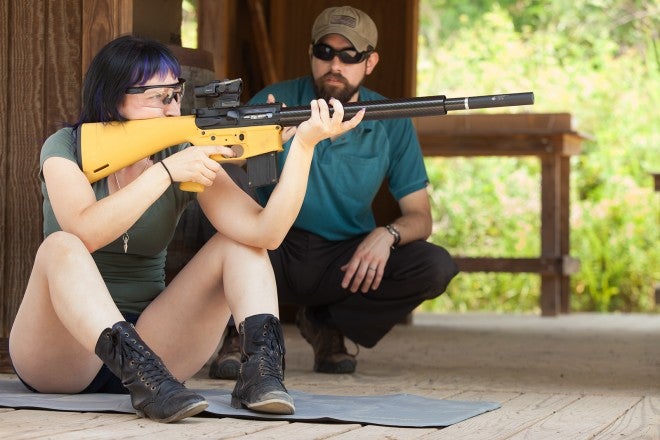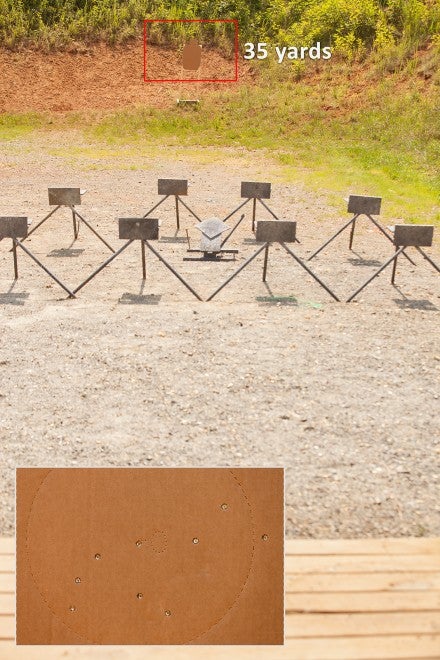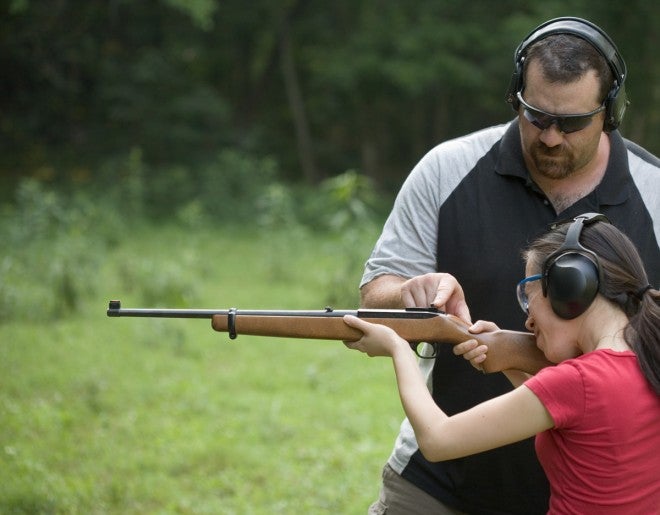Using Optics for Training New Shooters
Oleg Volk 06.10.15

When teaching new shooters, it is traditional to start them off with iron sights. That works, but I found a compelling argument for using optics for at least a part of the first range day. Consider how many tasks the learner has to master at once: safe handling, steady hold, trigger control, sight alignment. The last task is complicated if the learner is cross eye dominant or has generally poor eye sight.
Taking some of these tasks out of the consideration temporarily, such as using sandbags for support or an optic to bring the reticle into the same focal plane as the target, allows to concentrate on other aspects more fully. Once safe handling and trigger control have been mastered, greater difficulty may be introduced by the use of field position without sandbags or bipod and by using aperture or notch iron sights. The closest analogy is using automatic transmission for the initial driver education and adding manual transmission once situational awareness and other necessary driving skills developed.
A typical range session with semi-automatic rifle and optics goes something like this. A very close range target is presented to the standing shooter, mainly to teach the operation of the rifle. Once the learner is confident about the controls, steadier positions like sitting, squatting, kneeling, or prone are demonstrated.
In this case, the optic is 1.5 power, just enough to make the eye behind it dominate even if the shooter is normally left eye dominant. Any scope used should be low in power and have a large eye box, otherwise the eye position will be too critical and distract from the aiming process. The reticle also makes it easy to see how the trajectory changes closer and further from the zero. Subsonic ammunition and a sound suppressor are used to minimize the discomfort from the noise and blast, allowing no hearing protection if the range is not in use by others. That, in turn, allows easier communication than with ear plugs and a much cooler head than with active ear muffs. During the summer, that’s a big advantage in comfort.
The result is perfectly respectable for the first time shooter who has ever fired only 15 rounds prior to this string. The learner was encouraged instead of frustrated. The target, photographed or taken home, confers certain bragging rights and helps to encourage others to come to the range.
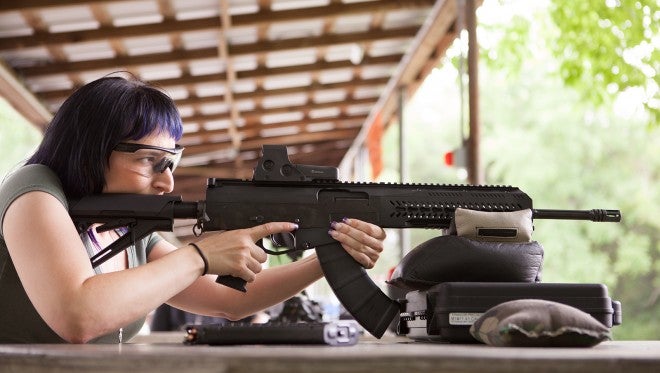
While I do not encourage the use of larger caliber arms during the initial introduction, the trainee was interested in trying them and a very low recoil CTMR 7.62×39 rifle was available. Here, the target was set at 50 yards (closer would have been ideal, but this range didn’t have closer stands) and an EOTech 512 holographic sight used. Since it allows almost any head position while retaining the reticle visibility and alignment, the shooter could assume the most comfortable hold on the rifle for recoil control. Unlike magnified optics, EOTech and other red dots allow shooters to sight with both eyes open, so cross eye dominance (if present) doesn’t come into play. Unlike front and rear sights, the reticle cannot be mis-aligned or mis-focused, so diagnosing misses comes down to trigger and breath control.
Iron sights can be introduced later in the initial range trip or during the second trip. Learning to use them is important, but it is a complication that is best added gradually after the early learning curve has been surmounted.
